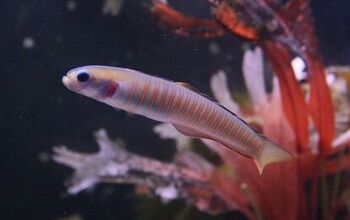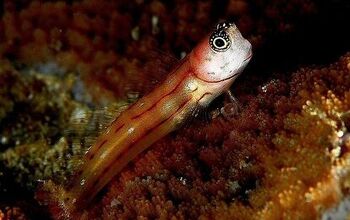Eels


About Eels
Eels are one of the more fascinating species of fish in the aquarium trade. They are characterized by their long bodies and snake-like heads. Like catfish, most species of eels do not have scales. Their bodies are covered instead in soft, mucus covered skins. Eel are also unique in that they do not have separated dorsal and pelvic fins. Instead, their fins merge together with their tails to form a continuous fin ridge along their bodies.
Eels are one of the more fascinating species of fish in the aquarium trade.
Eel are found across the world in rivers, lakes and estuaries. Most species return to the ocean to spawn.
Eel come in shades of brown, yellow, grey, silver and black.
While a relatively hardy species of fish able to survive in a wide array of aquarium conditions, eel aren’t recommended for beginner aquarists. For one, most species of aquarium eels can grow over 3 feet in length and require extremely large aquariums or outdoor ponds.
Most eel are bottom dwellers and prefer aquariums with soft substrate like sand, smooth gravel or peat. Many species even enjoy burrowing deep into the substrate and this should be taken into account when setting up the eel aquarium. Most species of eel are nocturnal and enjoy dimly lit aquariums with plenty of hiding places. Aquarists can use rocks and driftwood to create caves and hiding places in which the eels can hide in. Eel are however very active swimmers and also require large open swimming spaces.
Different species of eel vary in temperament and should be carefully researched before purchase. Some species of eel are extremely aggressive and are best in species aquariums. There are however relatively peaceful species of eels that can be kept with large, non-aggressive tank mates. Almost all eel are however opportunistic predators and will eat any fish that they can fit in their mouths.
Eels are carnivorous and can be fed on a range of live and frozen foods like shrimp, small crustaceans, mosquito larvae, tubifex worms and bloodworms.
While a relatively hardy species of fish able to survive in a wide array of aquarium conditions, eels aren’t recommended for beginner aquarists.
It is virtually unheard of for eels to breed in the home aquarium.
Black spotted eel, Electric Eel, Fire Eel, Peacock Eel, Tire Track Eel, Zig Zag Eel, etc.

Amy Tokic, Editor of PetGuide.com, is a passionate animal lover and proud pet parent of Oscar, a Shih Tzu/Chihuahua cross, and Zed, a Japanese Chin. Her love of animals began in kindergarten, when she brought her stuffed dog Snoopy into class with her every day. Now, she writes about her adventures in pet ownership and tirelessly researches products, news and health related issues she can share with other animal enthusiasts. In her free time, Amy loves perusing used book and record stores, obsessing over the latest pet products available and chasing squirrels with wild abandon (a habit attributed to spending too much time with her pooches).
More by Amy Tokic
























